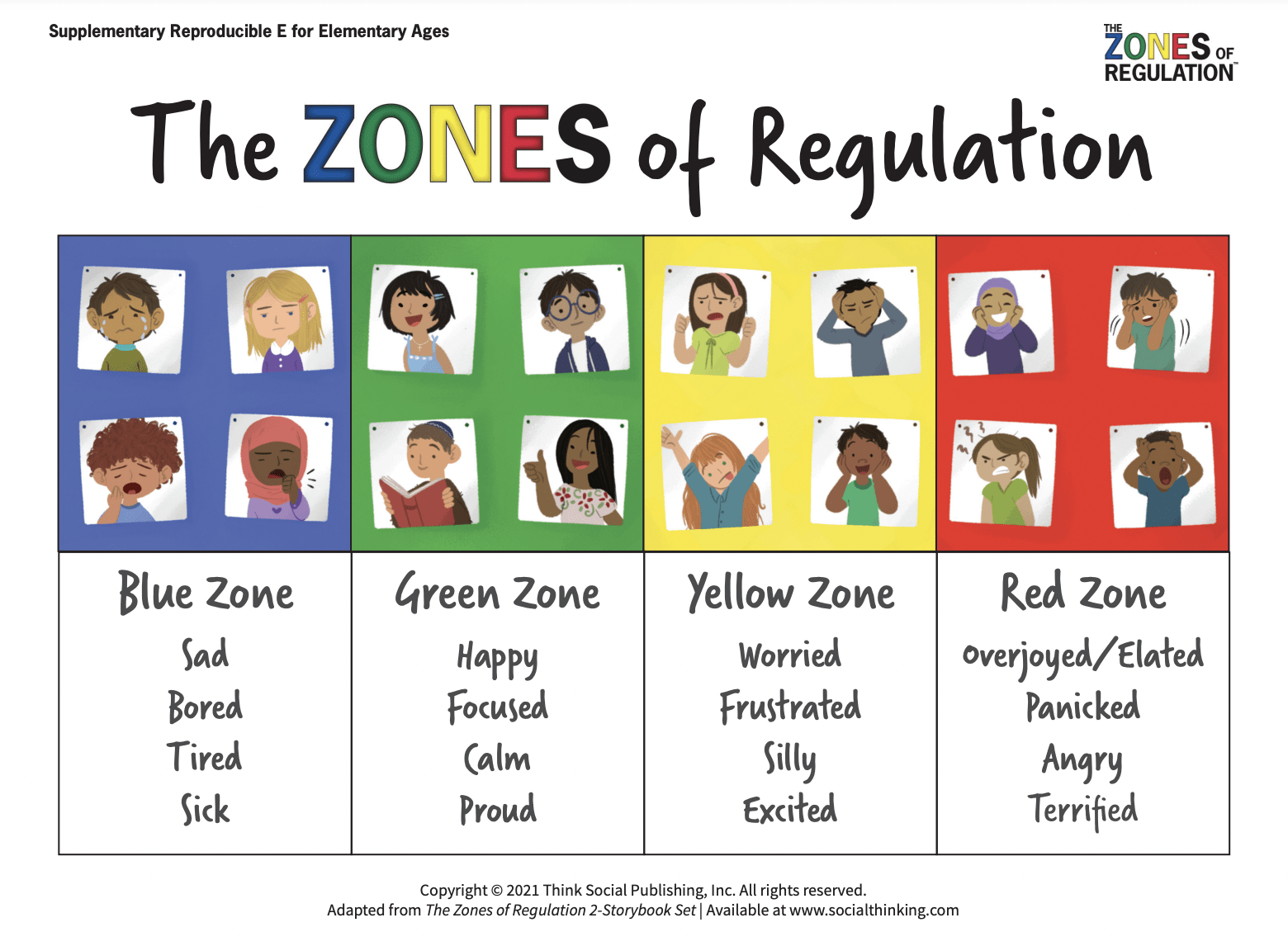You may have heard your child talking about ‘the Zones’ and their colours. What is this all about?
The Zones of Regulation is a curriculum developed by an occupational therapist, Leah Kuypers, that focusses on helping students to gain skills in self regulation. This includes their emotions and energy levels. Self regulation is defined as:
‘the best state of alertness of both the body and emotions for the specific situation. For example, when a student plays on the playground or in a competitive game, it is beneficial to have a higher state of alertness. However, that same state would not be appropriate in the library’.
Other names given to self regulation are: self-control, self-management, and impulse control.
Students are assisted to recognise when they are in different states called “Zones”. These Zones are represented in four different colours. The activities are designed to help students better understand what is happening inside their brain and body. When students have a better understanding of what is happening inside them, they are more able to identify:
- their Zone (emotion and energy)
- a tool/s to help them to move from one Zone to another depending on the situation/event
- a toolkit of tools that work for them in the respective Zones
- show a greater understanding of others’ Zones and how to help class members
It is important to note that everyone experiences all of the Zones—the Red and Yellow Zones are not the “bad” or “naughty” Zones. All of the Zones are expected at one time or another.
Our whole school has undertaken training in the Zones of Regulation this year. We are at the beginning stages where students are learning the vocabulary of emotional terms, identifying a variety of emotions, the skills in reading other people’s facial expressions and the Zone linked to the emotion and energy level. We work through all the lessons during the year leading to the tools, perspective-taking, and personal toolkits.
We are hopeful that as the year progresses, as a school community, we:
- Use the language and talk about the concepts of The Zones as they apply to you in a variety of environments. Make comments aloud so the children understand it is natural that we all experience the different Zones and use strategies to control (or regulate) ourselves. For example, “This is really frustrating me and making me go into the Yellow Zone. I need to use a tool to calm down. I will take some deep breaths.”
- Help our students to gain awareness of their Zones and feelings by pointing out your observations
- Validate what Zone a child is in and help them brainstorm expected ways to self-regulate so their behaviour is expected for the context/situation
- Share with our child/ren how his or her behaviour is affecting the Zone you are in and how you feel
- Help our child/ren become comfortable using the language to communicate his or her feelings and needs by encouraging them to share his or her Zone with you
- Show interest in learning about a child’s triggers and Zones tools. Ask your child if he or she wants reminders to use these tools and how you should present these reminders
- Ask your child to frequently share his or her Zones learning with you and talk about what he or she has learned
- Make sure to positively praise a child for recognising their Zone and managing their behaviours while in it, rather than only pointing out when children are demonstrating unexpected behaviours while in a Zone.
To find out more, you can:
- reference https://zonesofregulation.com
- talk to your child’s teacher
- view:



Leave a Reply